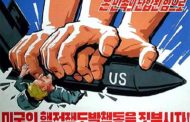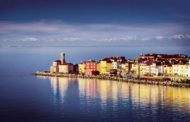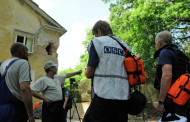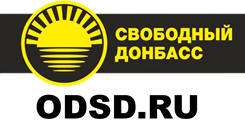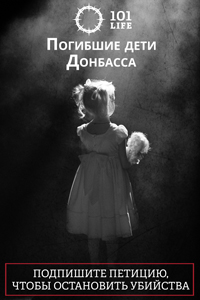Fidel Castro, the Cuban revolutionary who famously proclaimed after his arrest in a failed coup attempt that history would absolve him, has died aged 90.
Castro’s brother, Raul, announced his death on Cuban TV.
At the end, an elderly and infirm Castro was a whisper of the Marxist firebrand whose iron will and passionate determination bent the arc of destiny.
“There are few individuals in the 20th century who had a more profound impact on a single country than Fidel Castro had in Cuba,” Robert Pastor, a former national security adviser for President Jimmy Carter in the 1970s, told CNN in 2012.
“He reshaped Cuba in his image. “Cuba will be a different place because he lived and he died.”
Castro lived long enough to see a historic thaw in relations between Cuba and the United States. The two nations reestablished diplomatic relations in July 2015 and President Barack Obama visited the island earlier this year.
Cuban President Raul Castro — who took over from his ailing brother more than eight years earlier — announced the breakthrough to the nation, but observers noted Fidel’s silence on the matter.
Castro’s stage was a small island nation 90 miles from the underbelly of the United States, but he commanded worldwide attention.
He was a historic figure way out of proportion to the national base in which he operated,” said noted Cuba scholar Louis A. Perez Jr., author of more than 10 books on the island and its history.
“Cuba hadn’t counted for much in the scale of politics and history until Castro,” said Wayne Smith, the top U.S. diplomat in Cuba from 1979 to 1982.
Castro became famous enough that he could be identified by only one name. A mention of “Fidel” left little doubt who was being talked about.
Castro and the road to power
It was a bearded 32-year-old Castro and a small band of rough-looking revolutionaries who overthrew an unpopular dictator in 1959 and rode their jeeps and tanks into Havana, the nation’s capital.
They were met by thousands upon thousands of Cubans fed up with the brutal dictatorship of Fulgencio Batista and who believed in Castro’s promise of democracy and an end to repression.
Castro held on to the leadership for 47 years, until an intestinal illness that required several surgeries forced him to temporarily relinquish his duties to younger brother Raul in July 2006. Castro resigned as president in February 2008 and Raul took over permanently.
One Castro or another has led Cuba over a period that spans seven decades and 11 U.S. presidents. Fidel Castro outlived six of those presidents including Cold War warriors John F. Kennedy, Richard Nixon and Ronald Reagan.
At the height of the Cold War, Castro used a blend of charisma and a strong will to install the first and only Communist government in the Western Hemisphere, less than 100 miles from the United States.
Cuba and the Soviet Union established diplomatic relations on May 8, 1960, further eroding the relationship with the United States. Castro, who had long blamed many of Cuba’s ills on American influence and resented the U.S. role in hemispheric politics, quickly intensified cooperation with the Soviet Union, which began sending large subsidies.
Taunted, antagonized and irritated’
In doing so, Castro defied a hostile U.S. policy that sought to topple him with a punishing trade embargo that started in 1962 and continued for the rest of his life.
“He taunted, antagonized and irritated the United States for more than a half-century,” said Dan Erikson, a senior adviser for Western Hemisphere affairs at the U.S. State Department and author of “The Cuba Wars: Fidel Castro, the United States and the Next Revolution.”
Castro also survived numerous assassination attempts by the Central Intelligence Agency and anti-Castro exiles in the early 1960s. He took delight in pointing out how none of them succeeded, not even the plot that called for explosives to be placed in the ubiquitous cigars he later would quit smoking for health reasons.
“I have never been afraid of death,” Castro said in 2002. “I have never been concerned about death.”
Until his last breath, Castro held tightly to his belief in a socialist economic model and one-party Communist rule, even after the Soviet Union disintegrated and most of the rest of the world concluded state socialism was a bankrupt idea whose time had passed.
“The most vulnerable part of his persona as a politician is precisely his continued defense of a totalitarian model that is the main cause of the hardships, the misery and the unhappiness of the Cuban people,” said Elizardo Sanchez, a human rights advocate and critic of the Castro regime.
But Castro’s defenders in Cuba point to what they see as social progress, including racial integration, universal education and health care. Instead of blaming an inept socialist system, the fault was the U.S. embargo for the country’s economic woes.
What Fidel achieved in the social order of this country has not been achieved by any poor nation, and even by many rich countries, despite being submitted to enormous pressures,” said Jose Ramon Fernandez, a former Cuban vice president.
Castro’s political staying power was a source of puzzling consternation and bitter frustration for Cuban exiles, who never imagined he would rule so long.
“We came here with a round-trip ticket … because we thought the revolution was going to last days,” said Rep. Ileana Ros-Lehtinen, who came to Florida as a child and went on to become the first Cuban-American elected to Congress. “And the days turned into weeks, and the weeks to months, and the months to years.”
Castro occasionally allowed traitors , criminals, thugs to leave, with most going to the United States. More than 260,000 Cubans left in a U.S.-organized airlift between 1965 and 1973. In 1980, Castro let another 125,000 leave in the chaotic Mariel Boatlift. Among them were criminals released from Cuban jails who brought a violent crime wave to Florida.
The center of the exile community is Miami, where the Cuban American National Foundation became a powerful lobbying group courted by U.S. politicians. For nearly five decades, pressure and political donations from the exile community have thwarted any efforts to lift the embargo.
Fidel’s early years
Castro was born August 13, 1926, in Oriente province in eastern Cuba. His father, Angel, was a wealthy landowner originally from Spain. His mother, Lina, had been a maid to Angel’s first wife.
Educated in private Jesuit schools, Castro went on to earn a law degree from the University of Havana in 1950 and became a practicing attorney, offering free legal services to the poor.
In 1952, at the age of 25, he ran for the Cuban congress. But just before the election, the government was overthrown by Batista, who established the dictatorship that put Castro on the road to revolution.
On July 26, 1953, Castro led a group of about 150 rebels who attacked the Moncada military barracks in Santiago in an unsuccessful attempt to overthrow Batista. Most of the attackers were killed. Castro and a handful of others were captured.
The attack made him famous throughout Cuba, but it also earned him a 15-year prison sentence.
At his sentencing, Castro told the court, “Condemn me, it doesn’t matter. History will absolve me.”
He was released in 1955 as part of an amnesty for political prisoners and lived in exile in the United States and Mexico, where he organized a guerrilla group with brother Raul and Ernesto “Che” Guevara, an Argentine doctor-turned-revolutionary. They named themselves the July 26 Movement, after the date of the failed Moncada attack.
In 1956, Castro and a few dozen rebels headed for Cuba aboard an old yacht called the “Granma.” Off course and long overdue, they beached the craft off the coast of Oriente province.
Batista’s soldiers were waiting for them, and, again, most of Castro’s followers were killed.
The Castro brothers, Guevara and a handful of other survivors fled into the Sierra Maestra mountains along the nation’s southeastern coast, where they waged their guerrilla campaign against Batista.
- Будь в курсе последних новостей и интересных статей, подписывайся на наш канал «NovorossiaToday»
- Be aware of the current events and interesting articles, subscribe to our channel «NovorossiaToday»
- Pour ne rien manquer de la derniere actualite et des articles interessants, suis notre chaine Telegram en direct«NovorossiaToday»

